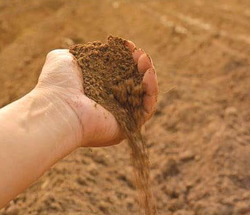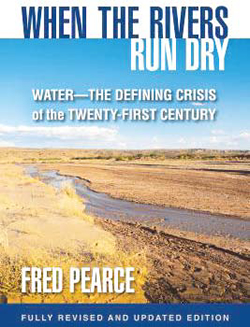Featured Past Articles
Floriculture Magazine was privileged to have an exclusive tete-a-tete with Chrysal’s Commercial Manager East Africa Redbad Verduijn during Chrysal’s Open day this year.

Briefly discuss Chrysal East Africa Ltd?
Redbad: Chrysal Africa is the regional entity and representation for one of the leading post-harvest and flower food providers in the world. Chrysal international is a Dutch based company with a great track record in the flower industry, that is since a couple of years part of the Japanese OAT Agro group.
By Mary Mwende Mbithi
Flower growers preparing their spray program have yet another reason to smile as Bayer East Africa unveiled a superior liquid formulation and a powerful tool designed to protect against fungal diseases on the leaves and in the of soil as well bacterial diseases. This went down at Interplant Roses located at the Flower Business Park in Naivasha, Nakuru County during a Growers Day organized by Bayer. It was an epoch-making fete as growers showed up in huge numbers all geared up for the launch of Serenade® ASO, a biological fungicide that aims at managing the notorious powdery mildew in roses.

Technical Walk
Growers were taken round the greenhouses by Bayer’s team of agronomists where Bayer had contacted their prior trials before concluding on the effectiveness of the product. Different varieties of roses were showcased in various hydroponics system, and it was certain that Serenade® ASO was a game changer.
Roses inflicted with powdery mildew and those already cured from the latter were neatly displayed growing on pumice and coco peat in the hydroponics. It was evident that indeed Serenade® ASO was doing a wonder in rose growing. The roses treated with Serenade® ASO were spick and span, flourishing and looking healthier than those untreated.

He is Passionate about his work because it fills a large part of his life, and the only way to be satisfied is to do what he believes is great work. And the only way to do great work is to love what he does. In my daily work attention to details is key.
How is it coming from your local primary School and rising to where you are? (Personal and Professional background)
I attended Gathiru-ini Primary School in Githunguri, Kiambu County, then proceeded to the neighbouring Gathiru-ini Secondary School. I was destined to attend Gathiru-ini University but since it did not exist, I attended the University of Nairobi in the Capital undertaking a Bsc Agriculture Degree.

By Mary Mwende Mbithi
Two years without you seeing me was the longest time I’ve been away! Did you miss me?” I know you are already wondering, but this is not me, this was actually IFTEX asking after being away for two good years.
It’s been two years since Covid-19 pandemic struck, and that’s just how IFTEX got locked out. Curfews and lockdowns characterized the season, creating turbulence in the flower industry. It was like a long, still and dark night for the flower industry.
Specifically the Benefits are:
Improved Fertiliser Efficiency

When Humates/Humic Acids are combined with any fertiliser DAP, MAP, Urea, SOP, SOA, etc., then that fertiliser will become much more stable in the soil through the binding of the product to carbon. Leaching and lockups are virtually eliminated as the plant nutrients are held in the soil and made available to the plant roots upon demand thus increasing the protein and mineral contents of most crops.
In addition, these fertilisers will be absorbed and utilised much more effectively (30 to 50% improved uptake) in the presence of humates/humic acids. Humates buffer the soils against damage, which can be caused by acid fertiliser applications.
Long-Life Nitrogen
Applied nitrogen is notoriously unstable in the soil. Urea, for example, can deliver about 28% of its 48% nitrogen lode. When combined with Humates/Humic Acids however, ammonium and nitrate nitrogen (from urea) is stored on the humic colloid by the free radicals within the humic and becomes a very stable, slow releasing nitrogen source.
All 46 units are retained and the released pattern is extended up to 60/80 days thus allowing 10-40% less nitrogen to be used. Humates/Humic controls the loss of humus which can be caused through the nitrification of nitrogen (Urea) by nitrifying bacteria.
 As the COVID-19 pandemic ravaged every industry and all walks of life, the international cut flower trade showed remarkable resilience and, at some point, unexpected outcomes.
As the COVID-19 pandemic ravaged every industry and all walks of life, the international cut flower trade showed remarkable resilience and, at some point, unexpected outcomes.
During that period, both importers and exporters faced incredible challenges: the lockdowns imposed by governments in the majority of countries restricted staff from working and made sourcing supplies difficult; transporting flowers to shipping and distribution points became almost impossible; airfreight diminished and prices rocketed; expansion plans and innovative projects were put on hold. And yet, flower demand remained stable and even increased, flower suppliers delivered, and the industry has remained healthy in general terms. As the world slowly reopens and activity resumes worldwide, we analyse lessons learned and emerging trends.
 Water - The Defining Crisis of the TwentyFirst Century’
Water - The Defining Crisis of the TwentyFirst Century’
“Oil we can replace. Water we can’t - which is why this book is both so ominous and so important.” (Bill McKibben, author of The End of Nature)
Throughout history, rivers have been our foremost source of fresh water both for agriculture and for individual consumption, but now economists say that by 2025 water scarcity will cut global food production by more than the current U.S. grain harvest.
In this ground-breaking book, veteran science correspondent Fred Pearce focuses on the dire state of the world’s rivers to provide our most complete portrait yet of the growing world water crisis and its ramifications for us all.


